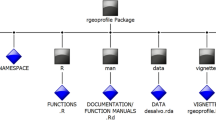
Overview
- Poses interesting questions on crime in a geospatial context
- Tackles various sorts of crime and places them in a geospatial context
- Discusses a few applications and implementations of GIS
- Includes supplementary material: sn.pub/extras
Part of the book series: Geotechnologies and the Environment (GEOTECH, volume 8)
Buy print copy
About this book
In 1996, the US National Institute of Justice (NIJ) established the crime mapping research center (CMRC), to promote research, evaluation, development, and dissemination of GIS technology. The long-term goal is to develop a fully functional Crime Analysis System (CAS) with standardized data collection and reporting mechanisms, tools for spatial and temporal analysis, visualization of data and much more. Among the drawbacks of current crime analysis systems is their lack of tools for spatial analysis.
For this reason, spatial analysts should research which current analysis techniques (or variations of such techniques) that have been already successfully applied to other areas (e.g., epidemiology, location-allocation analysis, etc.) can also be employed to the spatial analysis of crime data. This book presents a few of those cases.
Similar content being viewed by others
Keywords
Table of contents (18 chapters)
-
Front Matter
-
Fundamental Spatial Problems
-
Front Matter
-
-
Crime Analysis
-
Front Matter
-
-
Crime Modeling
-
Front Matter
-
Editors and Affiliations
About the editor
At LSU, he is teaching courses in (advanced) computer cartography, GIS, methods of spatial analysis, aerial photo interpretation, and how GPS collected data can be used for the analysis, modeling, and visualization in a GIS environment.
His current research interests include automated map generalization, the visualization of data quality and its effect on spatial decision support, the utilization of GPS for computer mapping, GIS, and spatial analysis, and the development of new techniques (for example, spatial association) for the spatial analysis of crime data. His research has been published in refereed journals and proceedings and has been presented at (inter)national conferences.
He also works for the Center of Geoinformatics at the University of Salzburg, Austria.
Bibliographic Information
Book Title: Crime Modeling and Mapping Using Geospatial Technologies
Editors: Michael Leitner
Series Title: Geotechnologies and the Environment
DOI: https://doi.org/10.1007/978-94-007-4997-9
Publisher: Springer Dordrecht
eBook Packages: Earth and Environmental Science, Earth and Environmental Science (R0)
Copyright Information: Springer Science+Business Media Dordrecht 2013
Hardcover ISBN: 978-94-007-4996-2Published: 18 January 2013
Softcover ISBN: 978-94-007-9766-6Published: 25 June 2015
eBook ISBN: 978-94-007-4997-9Published: 19 January 2013
Series ISSN: 2365-0575
Series E-ISSN: 2365-0583
Edition Number: 1
Number of Pages: XIII, 446
Topics: Geographical Information Systems/Cartography, Statistics for Social Sciences, Humanities, Law, Criminology and Criminal Justice, general



